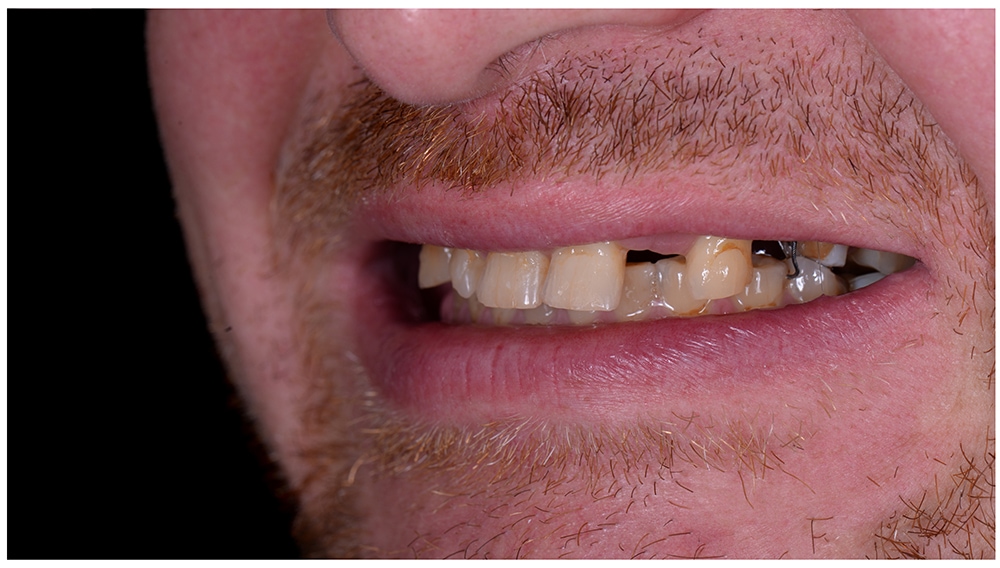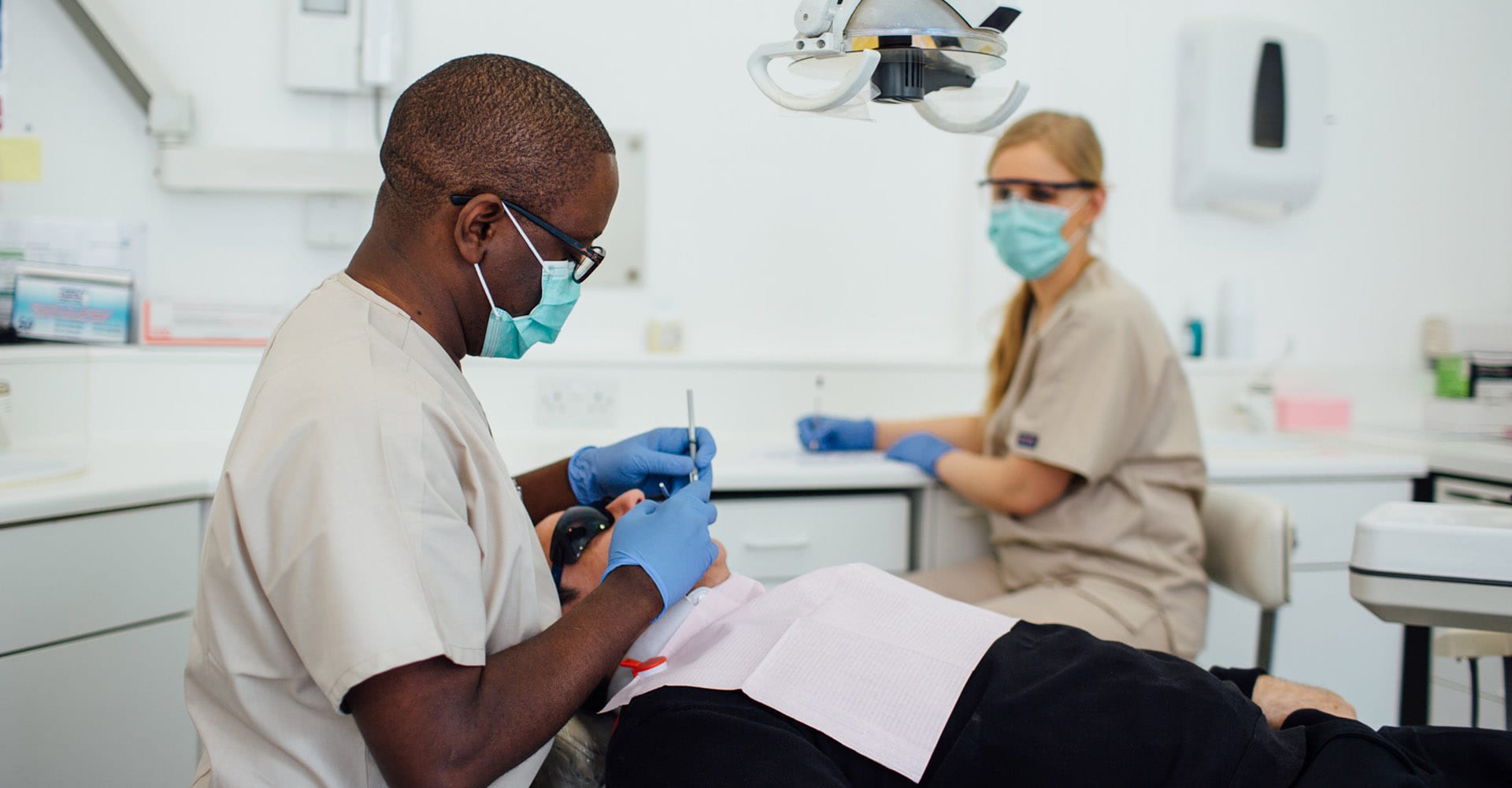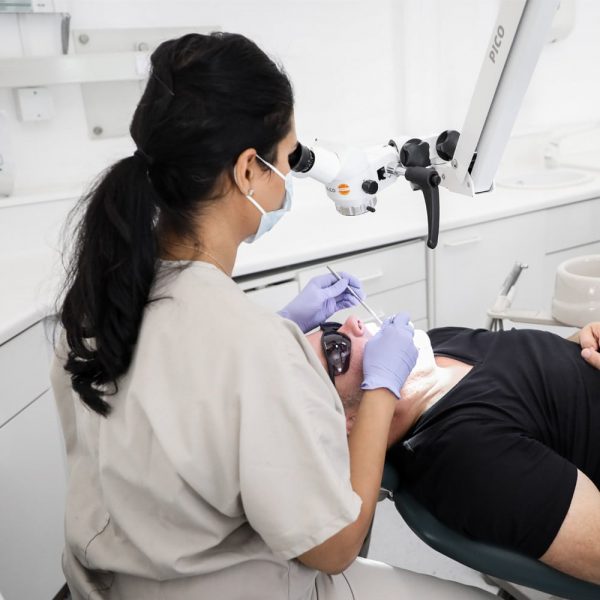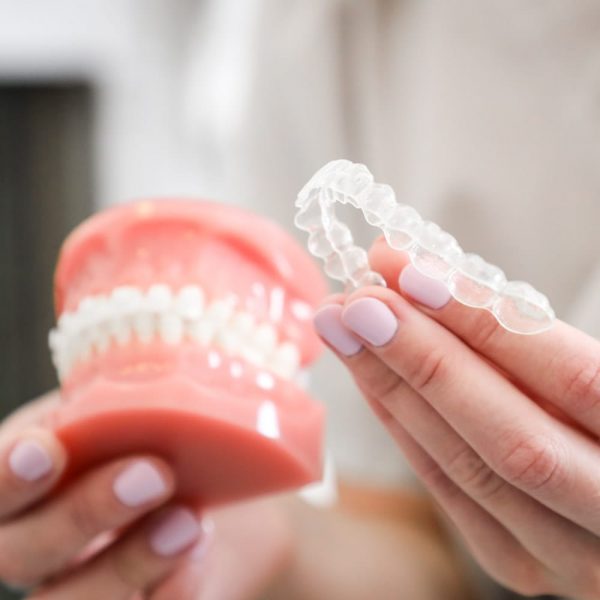Periradicular surgery provides a crucial alternative when conventional root canal therapy fails to fully resolve issues of infection surrounding the root tip of a tooth.
This intricate surgical procedure necessitates the removal of the diseased root tip and a subsequent meticulous suturing of the gum tissue back to its original position.
The discussion that follows aims to dissect the various aspects of this procedure, including its necessity, the detailed steps involved, the post-operative care, and the success rates associated with it.
Key Takeaways About Apicectomy | Periradicular Surgery.
- Periradicular surgery treats infections around the tooth root when conventional root canal treatment has been ineffective.
- It is performed when conventional root canal treatment has failed.
- The apicectomy/periradicular surgery involves removing the infected root tip and sealing the root canal.
- Factors such as the clinical skills of the endodontist, root filling quality, and orthograde root canal treatment influence the success rates of periradicular surgery.
What is Apicectomy?
An apicectomy, is a common dental procedure that involves the removal of the inflamed gum tissue and the end of the tooth root, specifically focusing on the tip of the root.
This surgical procedure, also known as periradicular surgery, is performed when a periapical lesion persists after conventional root canal treatment. The root end is exposed and resected, followed by the preparation of a root-end cavity which is then filled with a biocompatible root-end filling material to prevent bacterial leakage.
This periapical surgery is aimed at preservation of the tooth, and is an effective method of dealing with infections and inflammation in the root tip.
What is the difference between root canal treatment and apicectomy?
Apicectomy, or periradicular surgery, involves removing the infected root end. It is generally performed after a root canal therapy has failed to resolve the infection.
On the other hand, a root canal treatment, a common endodontic treatment, involves removal of the infected pulp from the root canal system without surgery.
While both procedures aim to retain the tooth, apicectomy is more invasive and is typically considered when a root canal has not provided the desired results.
What is Periradicular Surgery?
Periradicular surgery is an umbrella term that covers:
- Apicectomy (see above).
- Repair of perforations. These occur when there is a communication between the root canal system and the periodontium or the oral cavity. This can either happen as a complication of root canal treatment OR root resorption (side effect of dental trauma).
- Management of extruded root filling.
- Surgery to explore root fractures.
| Periradicular Surgery Involves | Outcome of Periradicular Surgery |
| Removal of infected root tip | Often successful, improving oral health |
| Sealing of root canal | Contributes to the patient's comfort |
| Treatment of infections around the root | Prevents further dental complications |
| Procedure when root canal treatment has failed | Resolves persistent dental infections |
Periradicular Surgery Steps
The periradicular surgery steps are as follows:
- Detailed history and examination (including x-rays) results in a full assessment of all the risks of the procedure can then be discussed so that you are fully informed before the procedure.
- Local anaesthesia is achieved with nerve blocks (using lidocaine containing a vasoconstrictor) or infiltrations with articaine.
- Incisions in the gum to allow the removal of the gum from the bone which exposes the area to be repaired.
- If the purpose of treatment is the apicetomy, the root tip is then removed (leaving the root filling exposed).
- Removal of the diseased and infected tissue which is sent to the laboratory for histopathological investigation.
- The exposed root filling is then sealed with a biocompatible material. This is usually mineral trioxide aggregate (MTA) which is a biocompatible substance that promotes healing.
- Placement of sutures. If dissolvable stitches are used, they will dissolve within 2 weeks.
The success of periradicular surgery hinges on the precision and attention to detail in each step.
Periradicular Surgery Aftercare
After meticulously executing the various steps of periradicular surgery, attention must be turned to the critical period of aftercare to ensure optimal healing and minimise discomfort. The aftercare plan focuses on pain management and the prevention of persistent periapical complications:
- Taking prescribed medications, typically ibuprofen and/or paracetamol for 2-3 days after surgery.
- In case of excessive bleeding, use a tea bag or gauze to apply pressure.
- Soft diet for 3-7 days.
- Mouth washing with a chlorhexidine-based mouthwash until the sutures are removed.
- Review appointment in 2 weeks after surgery to remove sutures.
The success rates of periradicular surgery depend significantly on the quality of the root canal filling and the filling materials used during the procedure. Proper aftercare is crucial, especially if previous surgical attempts have been unsuccessful.
Success Rates of Periradicular Surgery
The strategy for successful periradicular surgery include elements such as specialist endodontic skills and meticulous excellent root filling. However, the presence of periapical radiolucency or need for re-treatment or periradicular surgery can impact outcomes.
Mandibular molars and older age groups have been associated with a higher risk of extraction. Thus, while the periapical health of the tooth is integral, patient-specific factors also play a pivotal role in determining the success of periradicular surgery.

















